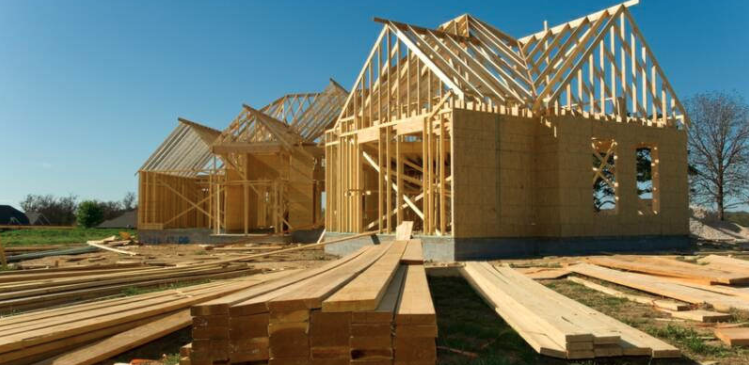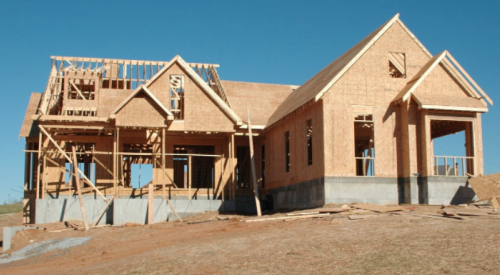In Part I on the evolution of quality management in home building we offered a model to determine where you stand in your own quality journey and the characteristics of each phase. In Part II we hear from industry veterans on how builders responded to the changes in customer expectations, balancing customer needs with the new reality of home building during a housing recession.
Where has the evolution of quality management in home building brought us? Let’s begin with a recollection of where we started. Tom Noonan, formerly of Pulte Homes and Sunrise Colony Homes, vividly recalls coming from the General Electric Six Sigma culture to home building in 1992: “Most people didn’t know how to even spell quality. It took me a while to dumb-down my language, because people didn’t grasp the concepts.”
What a change 20 years has seen, and like the proverbial frog in the cook pot, those who have been in it every step of the way sometimes forget how far we’ve come. From the days of “brute force quality” described in the first article in this series, the home-building industry has largely gained the understanding that simply pouring time and money into back-end customer recovery strategies to remedy things gone wrong is a poor substitute to doing things right the first time.
Even those still mired in post-close rework and salvaging of customer relationships are at least aware of the horrendous cost they bear. Where do we stand as an industry today? Dwight Sandlin, president of Alabama’s Signature Homes, is that rare home builder who describes 2011 as not merely a good or great year, but their best ever. Sandlin suggests, “Quality used to be a selling tool, a differentiator. I do not think it is today. Now it is simply the basic expectation of the customer.”
David Weekley, chairman of David Weekley Homes, Houston, clearly agrees: “The expectations of the homeowner have grown dramatically, as have those for other major household items such as appliances and cars. Quality is now a requirement to compete.”
Sandlin adds, “Today, we buy a new car and expect it to work properly for 100,000 miles, and the same is true for our homes. Customers simply expect they should not have problems.”
It is true that cars are performing far beyond the expectations of 15 to 20 years ago, and if you are shocked that customers expect a house that costs 10 times the average price of a new car to perform similarly, you are simply out of touch.
The Rise and Fall of J.D. Power
Getting from there to here has not been without pain. One of the most controversial factors in home building’s quality awakening in the late 1990s was the advent of the J.D. Power U.S. New-Home Builder Customer Satisfaction Study. There were many stories spun about how the data was collected and processed, nearly all of which were false. Homeowner names and addresses were culled from public records and, short of intercepting surveys at mailboxes and committing mail fraud, it was virtually impossible to rig the results. All homeowners received identical surveys and the results sounded an alarm that was impossible for most to ignore. Home builders, with a few notable exceptions, lagged all other American industries in quality and customer satisfaction. At first, J.D. Power was met with considerable resistance, as Noonan relates: “There was an interesting comment by one executive that, ‘This will go away. J.D. Power doesn’t understand our business. We’ll just wait ’em out.’”
For the first five years of the survey, although the best local home builders competed quite effectively, Pulte Homes stood head and shoulders above all other national builders. That fact, along with evidence that the customers were paying attention to survey scores, placed incredible pressure on Pulte’s competitors and a flurry of initiatives were launched to catch up.
Alan Laing, former national supply chain manager at Pulte, was instrumental in inviting J.D. Power into the home-building industry. “The concept was simple,” Laing explains. “When we reached 100,000 homes per year, as we thought we would, we believed having a brand like Toyota and Lexus would be valued by the consumer, and the recognition of a third-party affiliate with a name like J.D. Power would support incremental sales and improved financial performance. Neither the volume nor the brand benefit materialized. In hindsight, the concept was flawed. J.D. Power won’t be missed.”
In case you had not heard, J.D. Power exited the industry last year because too few home builders were buying the data packages required to fund the extensive research the surveys and their analysis require. The number of builders willing to pay the fees for use of the J.D. Power trophy in advertising also dwindled. There was, without question, incredible time, effort, and money expended chasing survey scores. After those first years, the gap narrowed and over time the J.D. Power juggernaut seemed to lose relevance. Yet the impact of the survey is inarguable, and awareness of the importance of quality evolved to a new level in home building. There was no going back.
Laing, who now runs a consulting practice focused on helping companies improve efficiency while maintaining quality, offers his take on the state of quality management in home building: “Compared to 20 years ago, most builders now understand the basic concepts of total cost and the cost of quality, and overall product quality is much better. There is also much more attention being paid to building science — what is behind the walls.” That is substantial progress.
Laing goes on to explain, “The next phase is vastly improved product development and value engineering processes that take advantage of the intellectual capital of the total expanded team. Designing quality into the home at every level is the foundation from which field execution of quality can be achieved. This requires a culture that embraces teamwork and collaboration.”
The Future of Quality in Home Building
So where do we go from here? Saun Sullivan, president and CEO of Louisiana’s DSLD Homes and Professional Builder’s 2011 Builder of the Year, says, “The next level of quality will be found by comparing ourselves to companies and products outside our industry.” Sandlin further observes, “We are probably the most inefficient of all well-run industries. It appears to me that we have to change to more of a manufacturing mindset.”
But what does that look like? I’ll offer the same rejoinder I offer whenever someone suggests that government should be run more like a business. I always respond with, “That depends. Which business?” As inefficient as government is, things will only worsen should it copy the models of MCI, Tyco, Enron, or most of the major airlines, to name just a few guilty parties.
Likewise, for home building’s adoption of manufacturing methods and operating philosophy, it all depends on whose methods we emulate. Much can be learned from Toyota, Ford, and a host of stellar performers in other industries. If we take on the practices of the old GM, U.S. Steel, and so many American manufacturers of the past — where production ruled with little regard for the customer and short-term optimization trumped longer-term profitability — things will get even worse.
If you are at all like me, you were left hoping for a bit more explanation of Laing’s earlier quote about how Pulte’s efforts to build a strong brand differentiator with high J.D. Power scores did not work out. So I contacted Laing again and asked him to go a bit deeper. He responded by stating that the notion that potential home buyers value a brand enough to actually pay a premium, or that they will choose a “B” location over a competitor’s “A” location, or that you could truly drive incremental sales because of a third-party quality endorsement never materialized. Repeat and referral sales were unchanged by their exceptional scores during the period that J.D. Power was involved.
“It was an idea worth pursuing and at the time made perfect sense,” says Laing. “But like many big ideas, not all of them work out.” I asked him to offer what does work and he replied, “Measuring your customer satisfaction and your total costs while running a decentralized customer-focused business with an empowered, fun-loving team is the true path to achieving industry-leading business results.”
That is both sobering and controversial and provides a cold splash of reality as we contemplate the further evolution of quality in home building. There seems to be little doubt that long-term solutions will be years in the making, but Signature Homes’ Sandlin is certain that one common practice during this worst-in-60-years market is not part of the equation: “Stripping out amenities and dumbing down the looks while creating bigger boxes for less dollars per square foot is a trend that will not last.” At least we can put that faux strategy to bed.
It is an old and worn but still wise saying, but be careful both what you wish for and what you copy. We’ll complete this three-part series in Pro Builder with a deeper look at the higher evolution of quality management — quality by prevention and quality by design.













